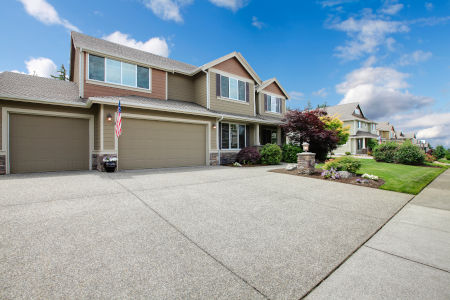How to Clean Concrete

Concrete surfaces, such as driveways, patios, and sidewalks, are known for their durability, but they can still accumulate dirt, stains, and grime over time. Pressure washing is one of the most effective ways to restore these surfaces to their original appearance. When done correctly, pressure washing can remove years of built-up dirt, oil stains, mold, and mildew, leaving your concrete looking clean and fresh. Regular pressure washing not only enhances the look of your concrete but also extends its lifespan by preventing deterioration.
While concrete cleaning might seem straightforward, achieving professional-level results requires the right equipment, technique, and preparation. Whether you're new to pressure washing or looking to improve your skills, this guide will walk you through the essential steps to clean your concrete surfaces effectively.
Prepare the Area for Pressure Washing
Before you begin pressure washing, it's crucial to prepare the area properly. Start by clearing the surface of any loose debris, such as leaves, dirt, and gravel, using a broom or blower. Move any outdoor furniture, vehicles, or plants out of the way to ensure a clear working space. Inspect the concrete for any cracks or damage; if you find any, consider making repairs before pressure washing, as the high-pressure water could worsen existing issues. Additionally, cover any nearby plants or delicate surfaces that could be damaged by the powerful water spray. This preparation step ensures a safer and more efficient cleaning process.
Select the Right Pressure Washer and Nozzle
Choosing the appropriate pressure washer and nozzle is key to achieving a clean, damage-free surface. For concrete surfaces, you'll need a pressure washer that can generate at least 3,000 PSI (pounds per square inch) to effectively remove dirt and stains. Equip your pressure washer with a nozzle that provides a 25- to 40-degree spray angle, which is strong enough to clean the concrete without causing damage. Avoid using a zero-degree nozzle, as it can concentrate too much pressure on a small area and potentially etch the concrete. Adjust the pressure setting as needed, starting on a lower setting and increasing gradually to ensure you're not using too much force.
Pressure Wash with Proper Technique
With your pressure washer ready, it's time to start cleaning the concrete. Begin at one end of the surface and work your way across in a systematic, overlapping pattern. Hold the spray nozzle about 12-18 inches from the concrete surface, moving it in a sweeping motion. Keep the nozzle moving consistently to avoid creating streaks or uneven cleaning. For stubborn stains or heavily soiled areas, you may need to move the nozzle closer, but be cautious to avoid damaging the surface. After pressure washing, allow the concrete to dry completely before assessing if any additional cleaning is needed.
Hiring a Professional
While pressure washing can be a highly effective way to clean concrete, it also requires skill and experience to do it safely and effectively. Hiring a professional pressure washing contractor can save you time, effort, and potential damage to your property. Professionals have the knowledge to select the right equipment and techniques for your specific surface, ensuring a deep clean without causing harm. They can also tackle large areas and stubborn stains that might be difficult to handle on your own. By entrusting your concrete surfaces to a professional, you ensure a pristine, long-lasting result that enhances the appearance and durability of your property.
Transform Your Exterior With Our Pressure Washing Specialists in Asheboro & Surrounding Areas